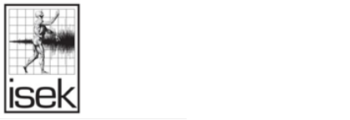About ISEK
The International Society of Electrophysiology and Kinesiology (ISEK) is a multidisciplinary organization composed of members from all over the world in health-related fields and basic science with a common desire to study human movement and the neuromuscular system.
The purpose of the Society is to promote research and teaching in the disciplines of Electrophysiology and Kinesiology in normal, experimental and pathological conditions of the sensory and motor systems, with emphasis on the interactive use of the two disciplines.
We welcome all to join the ISEK community by becoming a member.
As part of our goal to support diversity, inclusion, and a feeling of belonging for our members, we will announce a series of initiatives to support members who may otherwise not have a chance to attend our conferences or contribute to workshops and discussions. Visit our Diversity, Inclusion, Belonging (DIBs) page to learn more.
Learn about the Diversity Committee.
What is ISEK?
The International Society of Electrophysiological Kinesiology (ISEK) is a multidisciplinary organization composed of members from health related fields such as biomedical sciences as well as engineering, physical education, physical therapy and many other disciplines. These clinicians and basic scientists are bound together by a common desire to study human movement and the neuromuscular system. Key topics in this discipline are analysis of large data sets for physiology, EMG modeling and signal processing, ergonomics, motor performance and sports science, motor units, movement disorders and rehabilitation technologies, multiscale and trans-scale approaches for movement and neurosciences, muscle physiology, neuromechanics, neural Engineering, and sensorimotor control.
Every two years, these scientists gather at a Congress of ISEK to share advances and knowledge in the broad field of Electrophysiological Kinesiology. The participants with affiliated institutes and universities bring experience in the fields of Electromyography, Functional Electrical Stimulation (FES), Motor Unit Control, Neuromuscular Diseases, Rehabilitation, Muscle Fatigue, Kinesiology, Motion Analysis, Ergonomics and many other areas of study. The Society was born on August 13, 1965 when its founders J.V. Basmajian, S. Carlsöö, B. Jonsson, M.A. MacConnaill, J. Pauly and L. Sheving met and agreed to the formation of a small society of electrophysiological kinesiology. Soon afterwards, the first Council of ISEK was elected, including its first president, J.V. Basmajian.
The 1st International Meeting of ISEK took place in Montreal in 1968 where some 70 members participated, and the Constitution and Rules of ISEK were adopted. Since that time, multiple International Meetings or Congresses have been held, typically with several hundred participants in attendance. In addition to the exchange of scientific views, past meetings have produced such important contributions as the guidelines for reporting the units, terms, and standards for EMG research, and the establishment of the Society’s official journal, the Journal of Electromyography and Kinesiology (JEK), in the fall of 1990.
History of ISEK
During the International Congress of Anatomy in the Rhein-Maine-Halle, Wiesbaden, Germany in the Summer of 1965, several anatomists gathered for a luncheon to discuss the organization of a small society in electrophysiological kinesiology. This group agreed to found ISEK, the International Society of Electrophysiological Kinesiology. Since this meeting, ISEK has been providing a forum for professionals from health-related fields and basic science to discuss research and teaching in the disciplines of Electrophysiology and Kinesiology in normal, experimental and pathological conditions of the sensory and motor systems, with emphasis on the interactive use of the two disciplines.
Birth of ISEK
August 13, 1965 During the International Congress of Anatomy in the Rhein-Maine-Halle, Wiesbaden, Germany in the Summer of 1965, several anatomists gathered for a luncheon to discuss the organization of a small society in electrophysiological kinesiology. They were J.V. Basmajian of Canada, S. Carlsøø and B. Jonsson of Sweden, M.A….
Read more1st Business Meeting

August 22, 1966 At the Biomechanics Symposium in Zurich, August 22, 1966, some 25 of the members were available for a business meeting. They decided on a more formal structure and authorized an interim executive board consisting of J. Basmajian (President), B. Jonsson (Spostdocetary), and S. Carlsøø (Treasurer). The other…
Read more1st International Congress
The 1st International Meeting of ISEK took place in the Queen Elizabeth Hotel in Montreal, August 24-25, 1968. More than 70 members participated. During the two days, 30 scientific papers were presented. Most of them were published as Proceedings of the Meeting in a separate volume of the Journal of…
Read more1st Newsletter
In 1968 the first ISEK Newsletter appeared. It was edited by B. Jonsson. The above mentioned committee on standards and definitions with W.D. McLeod as chairman was finally formed in 1970 and reported their suggestions in ISEK Newsletter No. 10, 1970. This prompted vigorous discussion in succeeding Newsletters. In 1972…
Read more1st Regional Meeting
The First Regional Meeting of ISEK was hold in Umea Sweden, June 15-16, 1973. It was organized by I. Petersen, B. Jonsson and H. Ladd. Scandinavian and British ISEK members were present. Full papers from the regional meeting of ISEK in Umea were published as a supplement to the Scandinavian…
Read moreThe ISEK Logo
In 1974, ISEK held a competition among its members to design a symbol, insignia or logo. The council would decide and announce in the next newsletter. The logo was debated for several years.
Read more3rd International Congress
The 3rd International Meeting of ISEK was held in Pavia, Italy from August 30-September 9, 1976. The spostdocetary general of the meeting was P. Pinelli of Italy. A third council of ISEK was elected to serve during the period of 1976-1980. It consisted of H.W. Ladd (President), J.R. Silver (Vice…
Read moreRegional Meetings
Regional meetings were held in 1978: one in Baltimore, USA, June 8-10, organized by D.J. Hobart, and one in Dubrovnik, Yugoslavia, September 1978, organized by F. Gracanin. Abstracts of the Baltimore meeting were published as a separate book and the Dubrovnik abstracts appeared in the June, 1978 ISEK Newsletter.
Read more4th International Congress
In the Summer of 1979 the members met again for the 4th International Congress of ISEK, this time in Boston (August 5-10, 1979). The spostdocetary general of the meeting was C.J. De Luca. A book containing the proceedings of that meeting was published. The ISEK logo was improved and refined…
Read moreRegional Meeting and New Council
In 1980 a regional meeting was held in Monza, Italy, organized by V. Alfieri. During 1980 a new council was also formed to serve during the period 1980-1984. It consisted of H.W. Ladd (President), G. Andersson (Vice President), C.J. De Luca (Spostdocetary), H. Broman (Treasurer), F. Gracanin, K. Hayes, T….
Read moreRegional Meeting
In 1981 a Far East Regional Meeting was organized in Tokyo, Japan, September 19-21, 1981. This was chaired by T. Ito. Abstracts of this meeting formed a separate book and were mailed with the February 1982 issue of the Newsletter.
Read more5th International Congress
The 5th International Congress of ISEK was held in Ljubljana, Yugoslavia, from June 21-24, 1982, with F. Gracanin as Spostdocetary General.
Read moreNew Council
A new ISEK Council was elected by mail ballot in October, 1984. The Council included: G. Andersson (President), C. de Luca (Vice President), D. Hobart (Spostdocetary), K. Boon (Treasurer), H. Broman, R. Lehr, K. Robinson, Y Shirai.
Read more6th International Congress
The 6th International Congress of ISEK was held from August 26-29,1985 in Tokyo, Japan. Dr. Tadaatsu Ito, Professor Emeritus of the Nippon Medical School, was the Congress chairman. Fifty-five papers were presented by scientists from 22 nations.
Read moreRegional Meeting
A regional meeting of ISEK was held in Baltimore, Maryland, USA on September 25 and 26, 1987. Co-chairmen for this meeting were Drs. D. Hobart and P. Anderson.
Read more7th International Congress
The 7th International Congress of ISEK was held from June 20-23, 1988 in Enschede, The Netherlands and took place at the University of Twente. K.L. Boon was the Congress Chairman. Approximately 160 abstracts from the platform/posters were presented at the Congress and followed up by a Proceedings book. Two decisions…
Read more8th International Congress
The 8th International Congress of ISEK and the 25th Anniversary of ISEK took place in Baltimore, Maryland, USA, August 12-16, 1990. Donald J. Hobart was spostdocetary general for the four day Congress. Approximately 135 papers were given followed by the Congress Proceedings. The work that began in 1988 by De…
Read more9th International Congress
The 9th International Congress of ISEK took place in beautiful Florence (Pratolino), Italy. Antonio Pedotti was the spostdocetary general for the Congress. The four day meeting was packed with 250 presentations and followed up with the Congress Proceedings. A new Constitution was adopted. A new ISEK council was elected in…
Read more10th International Congress
Content to come
Read more